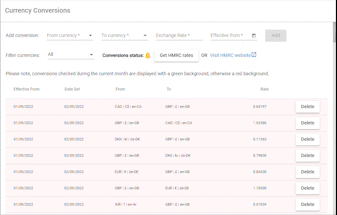Whiterock Systems clients have many varied and exciting requirements. For example, a typical request is for sophisticated back-end business processes to “talk” to other electronic systems to quickly carry out complex data processing.
What’s an API?
API stands for Application Programming Interface and is like a list of instructions from one electronic system to other systems explaining how to communicate with it. Software developers use those instructions to design and create systems that communicate with each other.
You may be wondering what kind of systems use APIs; trust me, they’re everywhere – there’s virtually nothing that doesn’t use an API. Anything electronic will communicate using an API, from websites to washing machines.
An API example
Recently one of our clients turned to us to help with one of their problems. They needed to get current foreign exchange rates issued by HMRC each month into their back-office systems. Their old process required somebody to visit the HMRC website at the start of each month. Then, they would find the webpage for the correct month, download an Excel spreadsheet, note the applicable exchange rates, and manually add them to their back-office system. Time-consuming and error-prone – but there’s a better way!
When an API is not an API
Whiterock said, “No problem!”. The UK government has been moving more and more of its systems online to be accessible via APIs over the internet for several years. We knew the data was available on their website, so we set out to make it happen.
As expected, the data appeared in the HMRC list of freely accessible APIs; but further examination revealed that it was only available in Excel format by manual download (instead of by API). It was a little disappointing but not a problem – there’s almost always more than one solution to a problem! As a result, we introduced a slightly different approach than anticipated that still delivered what the client needed.
Though not available over the more familiar API system, we were still able to come up with a solution to the problem. They now get the data they need at the press of a button and, in a few seconds, where and when they need it!
Software flexibility is a must
Being flexible and adaptable are hallmarks of good software development. There’s even a name for it: “Agile”. Designing and building agile software means we expect requirements to change and are ready for it. That way, we can adapt and support you however your project changes.
If your company needs help improving business efficiency – contact the friendly team at Whiterock Systems, we’d love a chat!
